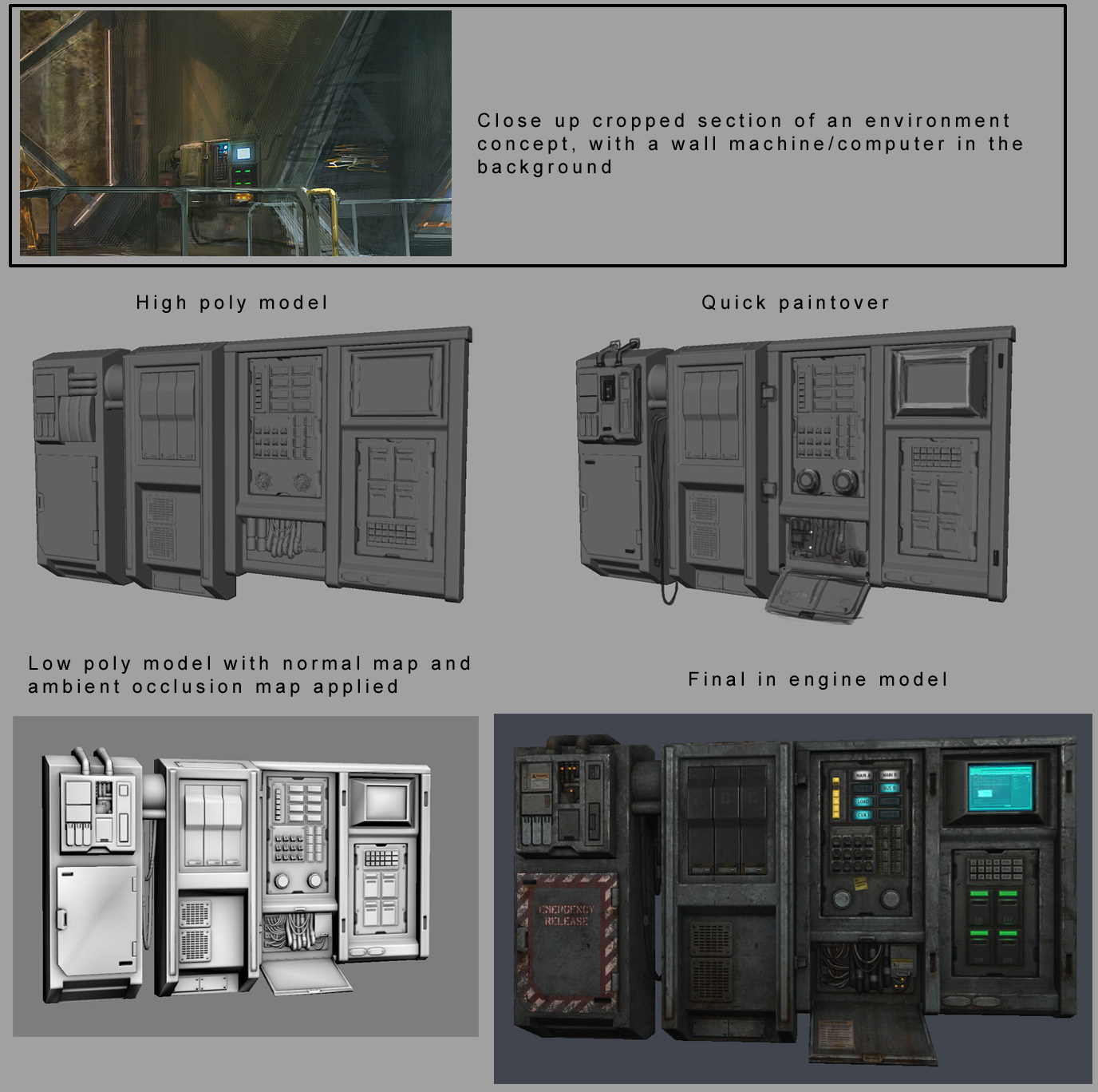Yep, more Mood-boards:
To give myself a reference point for for the design extended world i created this mood-board, to show the kind of atmosphere i wanted to create in my concept work. From this point i can establish the feel and mood of the world i am creating assets for. I have used references from variety of sources, film, concept art, video games, and anime. the common theme of this mood-board is the use of dark shadows a pale blue- turquoise light and a science fiction setting. all of these are important aspects of my designs that i want to establish.
I created this mood-board with technological level and style in mind. It gives me some ques for how to go about deigning the various aspects like surface/texture and form of my asset. i chose a combination of fictional and real world designs to give myself some variety in my source material.
i collected these images mostly from the designs and worlds that i have already looked at because i thought that it was fairly important to keep m research consistent and coherent. However i have thrown some new references into the mix to keep things fresh, while i want my designs to be coherent i know that if they are too uniform they will risk looking generic and bland.
This concept sheet interested me in particular because of the way it presents its idea. It shows the various stages of the machine (in un-deployed, and deployed form) as well as giving specific annotations and detail of the various parts of the design. this would help a 3D modeler to visualize how the machine works, and bu extension why certain details are there (to allow it to move in a certain way) obviously i ill be modding an image from my own design so i will already have an idea of the functionality of the design, but this will be a useful practice to keep for productions i will be involved in int the future where i may have to pass on my work t others, where how the concept "reads" is very important.
The concept also includes a character in the concept to provide a scene of scale and context.
The above images are all examples of video game assets. After working on collecting source material for mood boards i felt it would be useful to see how the kind of design i was looking at would transfer into designs created specifically for video games, taking into consideration all the constraints put on design by the need to transfer them into playable props in a game engine.
I looked both at concept art and final "game ready" 3D models. looking at the concept art helps me to understand the best way to create and present my own game art, while looking at the final 3D assets helps me to understand better how assets need to look when they are finally finished and ready to be implemented into the game engine.
This example particularly interested me as it shows stages of how an asset can be taken from concept art to a game ready asset. Unfortunately it is a slimmed down version of what i will have to do, as it does not show the initial conceiving of the idea in initial conceptual sketches or the UV mapping stage, nevertheless it is a useful resource to refer back too.








No comments:
Post a Comment